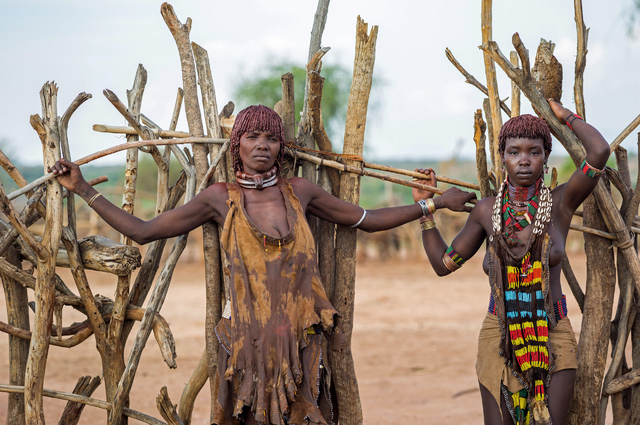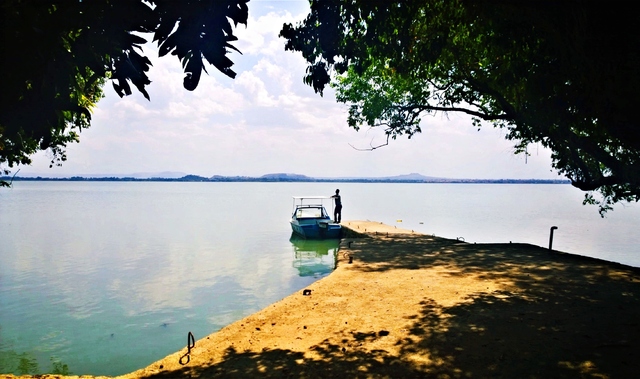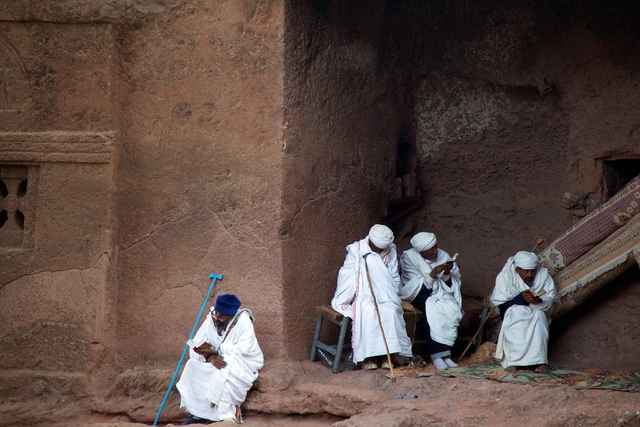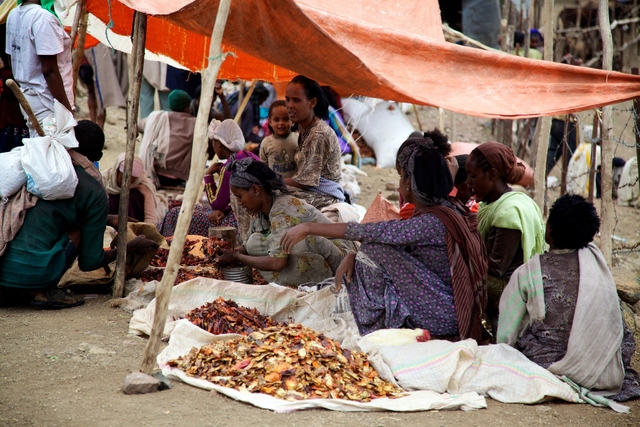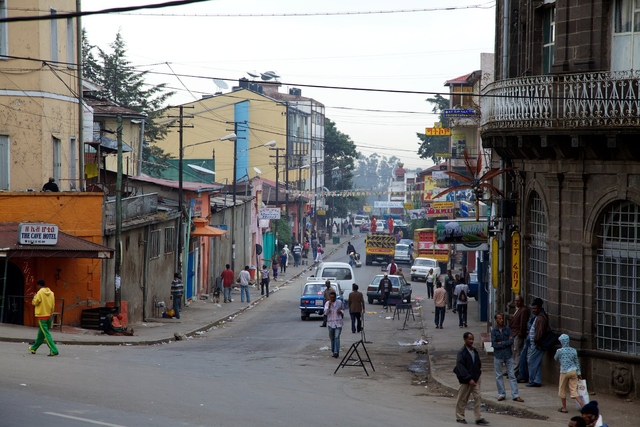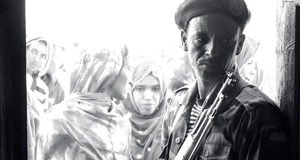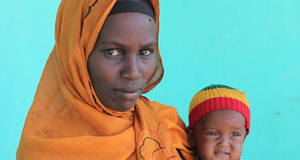Featured Article:Imagining Ethiopia: The Contrasting Views of Ethiopian Power, Progress, and Significance
By
2017, Vol. 9 No. 02 | pg. 1/2 | »
KEYWORDS:
The ancient civilization of Ethiopia has captivated the West and served, across centuries, as an inspiration for much of Africa. As a regional power in Eastern Africa, the nation is a strategic pathway into the Horn of Africa and guiding force in continental diplomacy. Ethiopia has been an imperial force imposing its will on neighboring nation states and also a firm symbol of resistance against colonialism. Interestingly enough, despite all of its influence on the world, Ethiopia has correspondingly shrouded itself in mystery. The Ethiopian mystique has seductively toyed upon the visions of the West and also the developing world, projecting upon each its own contrasting ideals and world view. In examining Ethiopia’s outward influence during the twentieth century, two main viewpoints emerge. On the one hand, a viewpoint held more commonly in the West paints “Abyssinia” (a synonym for Ethiopia) as a simplistic, weak and savage territory incapable of self-sustaining rule. On the other hand, an alternative philosophy champions the contributions of Ethiopia within Africa: the relative strength of its military forces, its geopolitical stabilizing presence, its mystical role as the guardian of Africa and, perhaps most of all, the view of Ethiopia as a beacon of hope for scattered communities. The reality is that truth resides in both narratives. The purpose of this paper is to assess the conceptual problems posed by these contrasting portraits of Ethiopia’s achievements and failures in the twentieth century. The Many Faces of Ethiopia: (left to right) Hamer women in Logara, near Tumi, Ethiopia (photo: Alfred Weidinger CC-2); vibrant colors of Lake Tana (photo: SarahTz/Flickr CC-2); the green hills of the Ethiopian Highlands (this photo and remaining © Dustin Turin); a busy spice market; women ride the bus near Sekota; the bustle of Addis. To what extent are these two opposing views valid? As we shall see through this historical and ethnographic overview, it is clear Ethiopia remained an influential power with implications spreading beyond the capital of Addis Ababa and affecting much of the world. However, the Ethiopian state did possess considerable systemic flaws. The concept of the ‘Dark Continent’ as well as colonialism best explains the Western viewpoints while the influence of Haile Selassie and African diplomacy bests illustrates the perspective of Ethiopia as an unacknowledged world power. Understanding the history of Ethiopia’s contributions is key to understanding Pan Africanism and also Western-centric thinking. The example shown by the exception that is Ethiopia served as a model to inspire much of the developing world as they began to shed colonial ties and form nascent nation-states. The first viewpoint can be described as ethnocentric chauvinism and explained by the ‘Dark Continent’ myth (Bassil 378). In particular, the British conception or creation of a Dark Africa mythology was designed to set Africans apart from the Europeans during the colonization of the late 19th century. During this period of expansion, perceptions of barbarity, African backwardness and idleness displaced the longstanding positive and ambivalent perceptions Europeans held dating to the era of the Ancient Greeks. The dehumanization of Africans is a modern phenomenon that is believed to have been used to justify the brutality of the trans-Atlantic slave trade. This ideology would reject the prior narrative of the historical interactions and knowledge of Africa. The ‘rediscovery’ of Africa drew a picture of international relations shaped by slavery, colonialism and notions of race. Afropessimism would penetrate public consciousness and become widely accepted and mistakenly, be seen as an immutable law of history. The arbitrary definition of civilization is also seen as a contentious point of understanding. Critics argue the Western-centric viewpoint has been used to manipulate and coerce ‘other’ peoples, records of ‘civilization’ and lack thereof have always been a part of international law. Formerly defined as the law of Christian nations and the public law of Europe during the 19th century, this would transition into the international law of the 20th century. Non-European states were allowed to join the European-based system of international relationships if they were ‘civilized’ as defined by the colonial powers. In the Ethiopian context, requirements to join the League of Nations included the abolition of slave trade – one of the first forms of human rights to be codified and mandated internationally. Some scholars argued by definition sovereign equality in this environment did not truly exist; if civilization depended on what Europe approved, in order to gain equality, the non-European community would have to accept Europe as her master and acquiesce to her demands (Allain 214). Obstacles to Ethiopia’s admission to the League of Nations as well as the controversial restrictions on development treaties and arms embargo was viewed by Ethiopian and Western observers alike as an unprecedented intrusion upon an admittedly free nation. These two explorations illustrate Western assumptions about Africa as a whole and the context within the understanding of Ethiopia was placed. However, a noticeable exception was made. Most prominently, the persona of Ethiopian Emperor Haile Selassie I (r. 1930-1974) etched a powerful and admired image upon the world. Respected by Western world leaders such as Robert J. Kennedy and Winston Churchill as a bearer of civilization and Africans as a powerful paternal figure, Haile Selassie served a powerful role not only uniting Ethiopia but inspiring millions globally. His poise, regal bearing, commanding instincts and coalition building influence as a diplomat have been widely studied and praised. Gordon MacCreagh, a Saturday Evening Post reporter, offers an insightful glimpse of 1930s Ethiopia in his article: “King of Kings.” Through his visit to Ethiopia, he thoroughly praises Emperor Haile Selassie, whom he regards as exceptionally wise and virtuous. Conversely, he shows Western animosity and disgust to much of the rest of Ethiopia’s culture, geography and indigenous groups. This quote is entirely revealing the conceptual dilemma of whether Ethiopia is primarily backwards or forward:
MacCreagh comments about the concept of blackness and associates it as disingenuous with values of civilization and propriety. These values of high culture are in his viewpoint, inexplicable and have no place in a Black or ‘backward’ continent. This can be further explained by the prevailing ‘Dark Continent’ narrative. Through his proceeding observations, he wonders how can such a noble ruler be African? He also makes an interesting parallel to the Ethiopian’s own sense of distinctiveness and self-superiority. As he defines their sense of pride: “Black Aryans,” there is an expectation of victory, religious righteousness and delusion (9). The Ethiopian disgust of the word ‘Abyssinia’ – an Arabic word for negroes also showcases an interesting phenomenon. They object strongly since they view themselves as a ‘white’ people, others are different colors inside and outside their imperial nation. Prominently, the concept that they are white is unusual and entirely unexpected. The Ethiopian culture is the relative standard upon which other races are evaluated. Interestingly, this mindset shows a revealing aspect of their identity and perhaps a nationalistic sense of championing their distinct cultural presence. This can be seen as a subconscious expression of Ethiocentrism and firm faith in not only the validity of their cultural identity but their pride in its alleged superiority. Haile Selassie inadvertently played a key role in the Black Consciousness movements as a symbol of black accomplishment for the scattered African diaspora (Chamley 82). Afrocentrism sought to reexamine world history through the lenses of Africa. These scholars believed Eurocentrism led to the neglectful denial of classical Africa’s contributions as change agents of history. Afrocentrists looked to ancient kingdoms such as the Ethiopian Akumite kingdom, the biblical prominence of Ethiopia in the Old Testament and other scattered symbols to rebuild what they perceive as a smashed and hidden history – with an intent to uncover its spiritual and cultural greatness to rebuild the African motherland. The symbolism and centrality of the name of Ethiopia itself was celebrated in the Bible as the empire was allegedly destined to stretch out her hands onto God. This philosophy inspired Frederick Douglass, W.E.B. Du Bois, Booker T. Washington, Marcus Garvey and others to question the concept of Western blackness. Garvey in particular, proclaimed the slogan of “Africa for the Africans,” inspiring a worldwide mass movement protesting European colonization and seeking a return to Africa. Another movement, the Rastafarian movement begun in the late 1930s in the slums of Jamaica following the coronation of Ethiopian Emperor Haile Selassie. Jamaicans believed Marcus Garvey’s prophecy had come to fruition: a black messiah had been crowned in Africa, the “Lord of Lords” had arrived. The movement’s name comes from the pre-coronation birth name of Emperor: Ras Tafari Makonnen. Citing the Old Testament, the followers of the movement believed the African race are the true descendants of the tribe of Israel and have been enslaved by their white ancestors of Babylon. When Selassie visited Jamaica in 1966, his presence captivated the Rastafarians and solidified his mythology of being a divine messenger from God. The myth of a golden age of the past, the united continent of ‘Ethiopia’ untouched by European influenced was popularized and sparked a cultural phenomenon. To this day, Haile Selassie has millions of followers globally from the U.S. and South Africa to China, Japan and Brazil. The most cherished accomplishment of Ethiopia is its fierce and independent nature. The people seemed unconquerable. Ethiopia remained the only African nation to never be colonized and was seen as a sort of ‘last prize’ which was never attained. Several groups did attempt invasions, including Italy in the 1890s and 1930s in the context of the ‘Scramble for Africa’. The Battle of Adwa from February 29th to March 1st, 1896 was the signature victory in this saga (Commey 30). The conflict arose from the disputed wording and interpretation of Article 17 of the Treaty of Wuchale, the Italian version of the treaty establishes Ethiopia as a protectorate and the other Amharic version claims this was untrue -- this standoff would lead to war. Ethiopia was a country divided with many ethnic groups swearing allegiance to their own chiefs (or Ras), however they were united by Emperor Menelik II and cooperated by contributing 100,000 troops to face the invaders. The then divided country was able to mobilize its separate entities and draw great strength from its ethnic actors. The Ethiopians earned a comfortable victory against the Italians, with over 70% of Italians captured, wounded or killed. This standoff would have long-lasting and far world-wide implications. Public opinion in Italy was outraged: widespread riots broke out in Italian communities across the globe culminating in the resignation of the Italian Prime Minister Crispi. Forty years later in 1935, fascist leader Mussolini was still stung and occupied Ethiopia for five years during World War II. Again, Italy was flushed out by the Ethiopians under Emperor Haile Selassie, with the help of Allied forces including the British Army. The prominent African-American historian, Professor Molefi Asante claims of the significance of Adwa: "After the victory over Italy in 1896, Ethiopia acquired a special importance in the eyes of Africans as the only surviving African state. After Adwa, Ethiopia became emblematic of African valor and resistance, the bastion of prestige and hope to thousands of Africans who were experiencing the full shock of European conquest and were beginning to search for an answer to the myth of African inferiority (31).” Ethiopia fittingly the Headquarters of the Organization for African Union, would serve as an inspiration for the rest of the world how to stand up to aggressors – especially African decolonization and succession movements.Continued on Next Page » Suggested Reading from Inquiries Journal
Inquiries Journal provides undergraduate and graduate students around the world a platform for the wide dissemination of academic work over a range of core disciplines. Representing the work of students from hundreds of institutions around the globe, Inquiries Journal's large database of academic articles is completely free. Learn more | Blog | Submit Latest in History |

